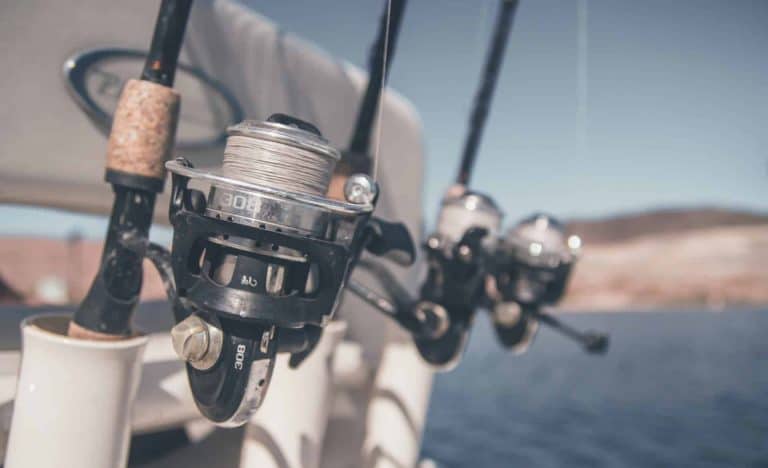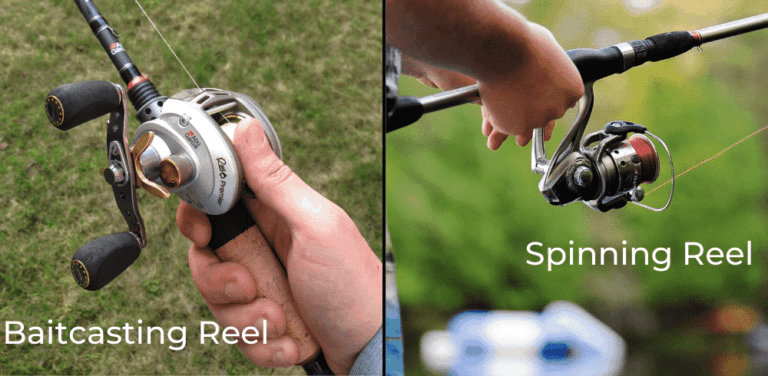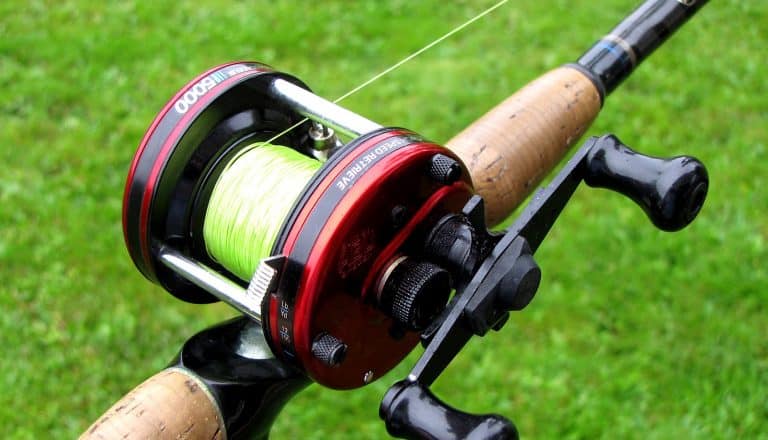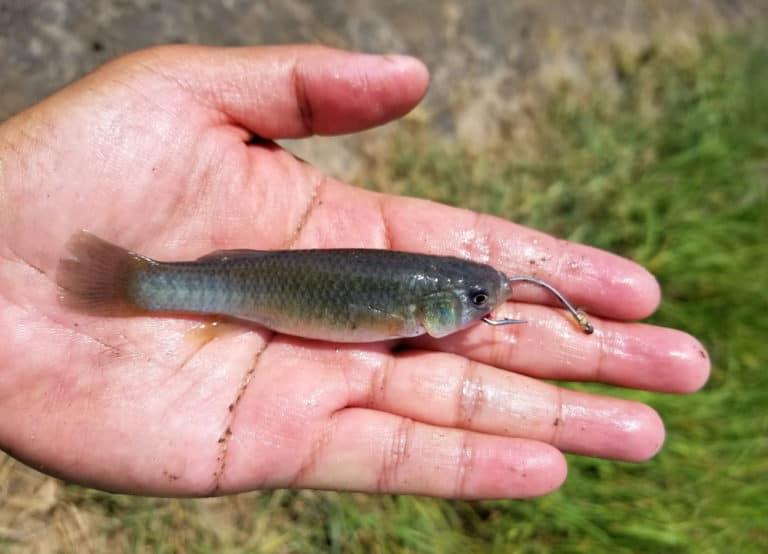Carolina Rig Fishing, Setup, Tips & Tricks
The Carolina rig was originally developed in the USA by anglers who wanted to fish a soft plastic lure on the bottom at a good range for bass.
The bass anglers would rig the lure weedless and retrieve it with a lift and drop technique, meaning that the weight would settle on the bottom and the lure would flutter down invitingly.
They would also fish this rig by simply casting out and reeling in. This method is also popular in the UK by anglers fishing for a variety of species in both fresh and saltwater.
Before making the rig, certain considerations such as hook size and line breaking strain will need to be decided upon, depending on where the angler is fishing and what species is to be sought.
The materials needed for tying this rig is a hook of the appropriate size, which can be a standard J hook or a weedless offset variety, a length of line for the rig body, a bullet weight of the appropriate size, 7g, 10g, and 15g are popular choices, a small size 8 or 10 swivels, and a 6mm or 8mm bead.
How To Tie A Carolina Rig
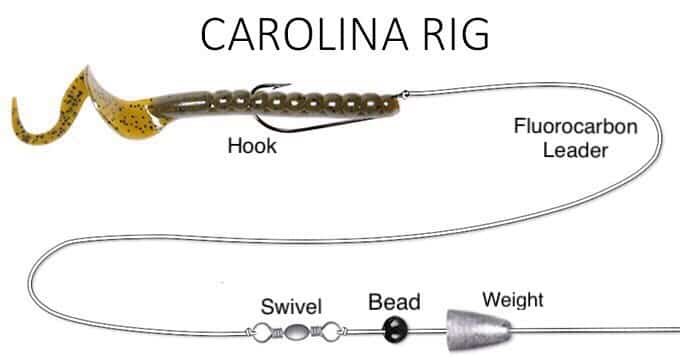
Tying the Carolina rig is a relatively simple process even for the novice angler.
The first thing to do is to cut a length of line around 24” in length and this will be used as the main body of the rig.
Some anglers like slightly longer or shorter rig bodies but this length is a good starting point.
Monofilament line can be used, but fluorocarbon is a better choice since it is almost invisible to the fish plus it is very abrasion-resistant.
Next, tie on the hook. When using fluorocarbon, it is important to take into consideration that knot slippage can occur so to avoid this issue two popular knots that can be used are the Trilene knot and a Palomar knot.
Also make sure the line is moist when the knot is tightened to avoid line damage.
On the other end of the line tie the swivel. Again, as with the hook, use the same type of knot and moisten the line before pulling tight.
This will now complete the main rig body.
The next part of the process is to take the main line and slide on the bullet weight.
The size of the weight to be used will largely depend on the distance the angler needs to cast plus the depth of the water to be fished in. Once the weight is on the mainline, the next step is to slide on the bead.
This can now be tied onto the end of the swivel that is attached to the main rig body.
Mainline, Rod & Reel
Mainline – We have already mentioned that the fishing line used for setting up your Carolina rig should probably be Fluorocarbon to increase your chances of catching any fish. But what about your mainline?
Your mainline can be pretty much anything you want it to be. monofilament and braid will both work well.
However, the combination of fluoro and braid together is often favoured by anglers due to the low stretch nature of the setup, which will help whilst trying to set the hook.
Rod & Reel – Whilst you could technically fish the Carolina rig with any rod and reel (you just cast, and reel in), you will improve your chances by using a medium-heavy fast action rod – especially if you are looking for bass.
With a high-quality baitcasting reel (Abu Garcia Black Max or Silver Max) with a high hear ratio.
The longer rod will allow you to perform longer, sweeping hooksets to rapidly remove any slack from the line and hook the fish.
The higher gear ratio reel will allow you to quickly reel in the fish to also improve the hook set to start fighting the fish.
Swivel, Beads & Weights
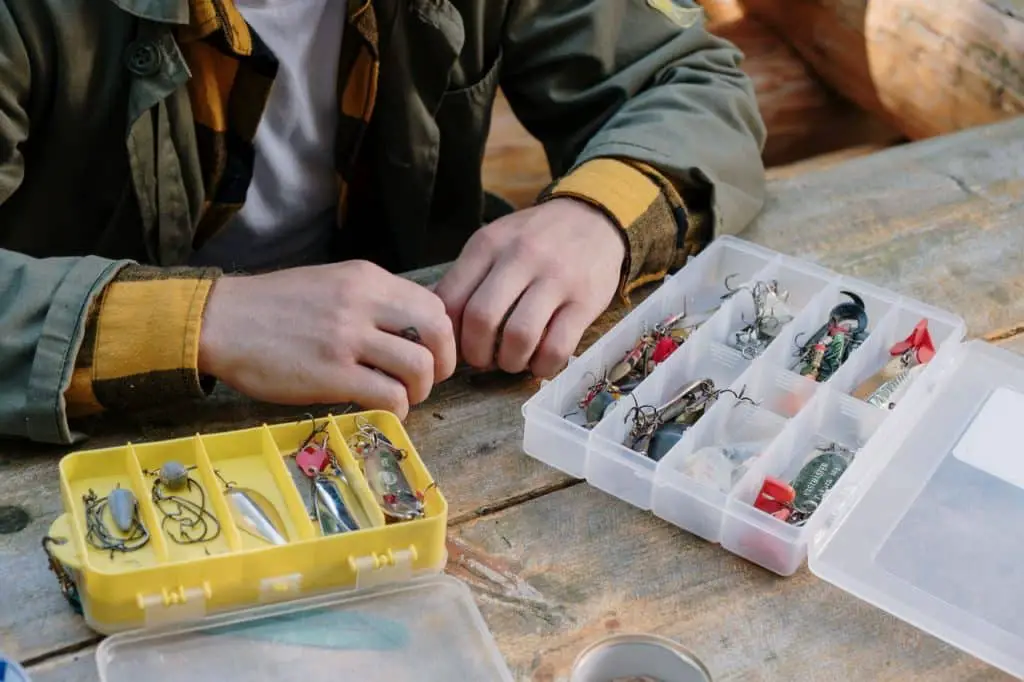
Swivel – The swivel is fairly straightforward. Any smaller size 8 or 10 swivel will do the trick, and remain strong enough for any bass. You want a small swivel to avoid it getting snagged on any weeds and rocks whilst reeling in your Carolina rig.
Beads – Most anglers will opt for a 6mm or 8mm bead for their Carolina rig setup. Any bead will be good enough, but to have the best Carolina rig possible, go for black or red glass beads.
The glass beads will hit against the weight and create a clinking sound that can attract fish.
Weights – Bullet weights are the most popular choice for setting up your Carolina rig. Anglers use Brass, Lead, and Tungsten.
Tungsten is the best choice as it has a higher density than brass or lead, meaning you can use a smaller sized weight for the same result.
A smaller weight will get caught up less in cover whilst you are reeling in.
Why does the Carolina rig work so well?
Compared to some of the more extravagant fishing rigs out there, the Carolina seems so simple and straightforward. So why does it work so well? Especially when going after species such as bass.
I personally believe that simplicity is key when it comes to fishing. So many times have I seen other anglers massively overcomplicate what they are doing in terms of technique and rig setups.
Very simple to use – The Carolina rig is very easy to use. Once your rig is setup, you literally just cast it in, and reel it back at a pace of your choosing. This makes it great for anglers and kids of all experience levels.
Subtle floating action – The way your bait floats in the water is one of the biggest reasons for your success. The Carolina rig allows your bait or lure to gently float along the bottom which is what tempts predatory fish like Bass to strike.
You can fish at any depth – One of the great things about the Carolina rig is that you can fish at pretty much any depth you want.
You can feel the bottom – The rig uses fairly heavy weights. This allows you to maintain bottom contact whilst reeling in. This provides you with feedback and information about the composition of the area.
What is the best Carolina rig bait?
Lizards – Plastic lizards have worked great with a Carolina rig for many years. They are typically used during the spawn and can be used to fish deeper fish beds with great success.
Flukes – Flukes or a soft plastic jerk baits are also a great option for your Carolina rig setup. They mimic real prey fish very well and bass can’t resist them.
For extra success, try a fluke with a floating leader line to keep it off the bottom and to mimic a real prey fish more closely.
Ribbon tail worms – Probably my favorite choice of lure whilst fishing bass is a simple ribbon tail worm. I use a wide range of colors depending on the water condition and clarity.
Most of the time in clear water, I will use a natural-looking worm for bass usually in the size range of 7.5-10″ although if I’m only targeting bigger fish, I will increase my worm size to 12″.
What is the glass bead for in a Carolina rig?
The purpose of adding a bead in-between the weight and swivel serves two purposes.
It firstly acts as a buffer so the weight is not constantly hitting the knot thus preventing possible knot damage.
And secondly, it creates an attractive ‘clinking’ sound when the weight hits the bead which in turn can attract the attention of any nearby fish.
Wrapping it up
The Carolina rig is a great choice for any angler looking for a new setup to go after bottom dwelling fish. It definitely has the most popularity amongst anglers for going after big and small bass.
We truly hope that this guide has gave you an insight into how to setup a Carolina rig and the different features that go into making it successful.
If you’re still doubtful about how a setup so simple can catch monster bass, then there’s not much else I can say than give it a go! It only takes a few minutes to set up and you’ve probably got the components at hand in your tackle box already.
Happy fishing!
Other fishing posts:
- Best Speargun For Spearfishing – The Ultimate Buyers Guide
- The 8 Best Fish Finders for Kayaks Reviewed
- Best Spearfishing Gloves – Our Favorites for 2024
- Best Fly Fishing Waders – The Ultimate 2024 List
- The Best Spinning Reel For Bass – Best Reels In 2024
- The Best Monofilament Fishing Line In 2024 – Review & Buyers Guide
- Best Telescopic Fishing Rod – Our Top Picks Of 2024
- The Best Inflatable Life Vests For Fishing – Top 5 Vests in 2024
- Best Fishing Kayak Under 300 [Top 8 Sit On Top Kayaks]
- Best Fishing Backpack For Tackle And Gear


